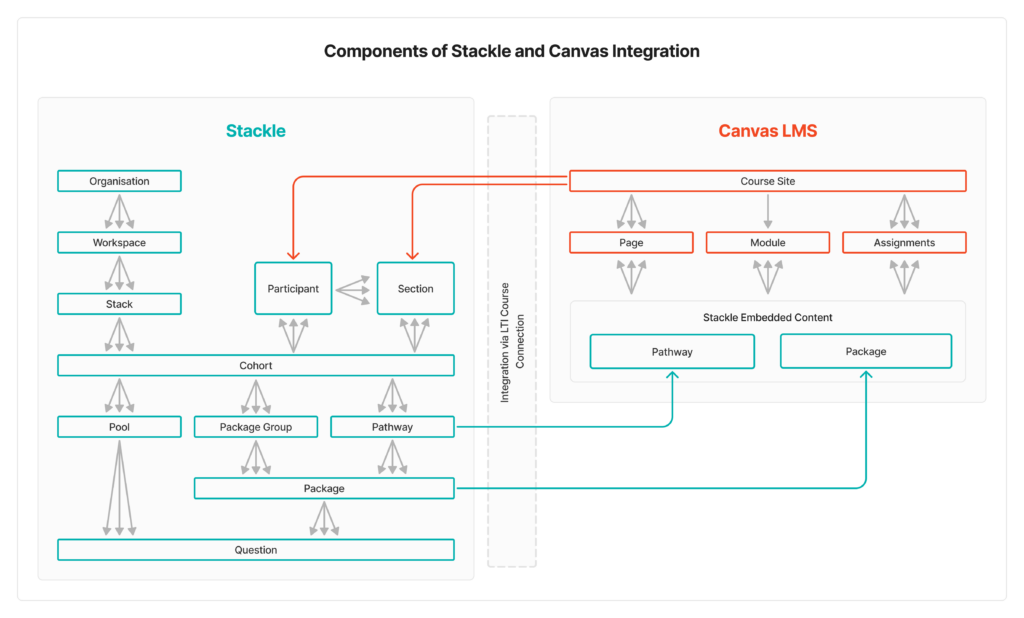Overview #
Questions are the way that your Participants will interact with Stackle. There are currently four different types of questions:
- Open Text
- Multiple Select
- Multiple Choice
- Media Response
To find out more about the different types and their uses, please read Question Types.

View of the Question Editor
Questions offer various content components that can be employed to captivate your Participants and encourage them to engage. As well as just posing a question, you can incorporate supportive text, engaging stimuli, and supplementary information that is accessible either continuously or after a participant has responded. The versatility of Questions in Stackle allows them to be utilized multiple times in diverse contexts, which you will discover as you become more acquainted with Stackle and its features.
Questions are made available to your Participants by organising them into Packages which are embedded into your learning content, via the Publish menu.
The responses of your Participants to Questions are collected by Stackle and you are able to view a variety of useful analytics via the Analyse menu.
Where do Questions fit in Stackle? #
Questions are a low level item, sitting under Pools. They are added to a Pool via the Create menu. Once Questions have been created, they can be added to Packages and made available to Particpants.

How can we use Questions? #
Embedding Questions within the content of a course can have several use cases that enhance the learning experience and promote student engagement. Here are some potential use cases:
- Formative assessment: Questions can be used to gauge student understanding of the material as they progress through the course. This allows instructors to identify areas where students may need additional support or clarification and adapt their teaching strategies accordingly.
- Active learning: Embedding Questions within the content encourages students to actively engage with the material, reinforcing their understanding and retention of the concepts being taught.
- Peer-to-peer learning: Questions embedded in the content can facilitate peer-to-peer learning by encouraging students to discuss and collaborate on answers, fostering a deeper understanding of the subject matter.
- Reflection and critical thinking: Questions can be used to prompt students to reflect on the material, analyze different perspectives, and develop critical thinking skills.
- Real-world application: Embedding Questions within the content can help students to see the relevance of the material to their own lives, encouraging them to apply what they have learned to real-world situations.
- Gamification: Integrating Questions into the course content can create a gamified learning experience, increasing student motivation and engagement through elements of competition, rewards, and progress tracking.
By crafting Questions with well-defined objectives, Stackle allows educators to accomplish all of the aforementioned benefits, enhancing the learning experience for students.